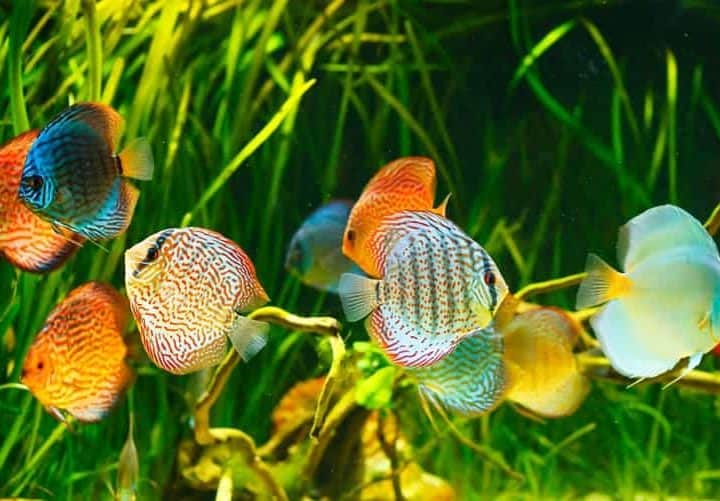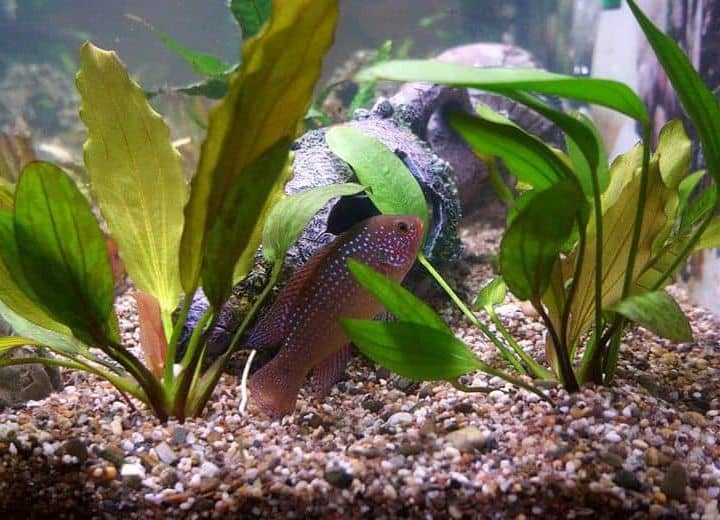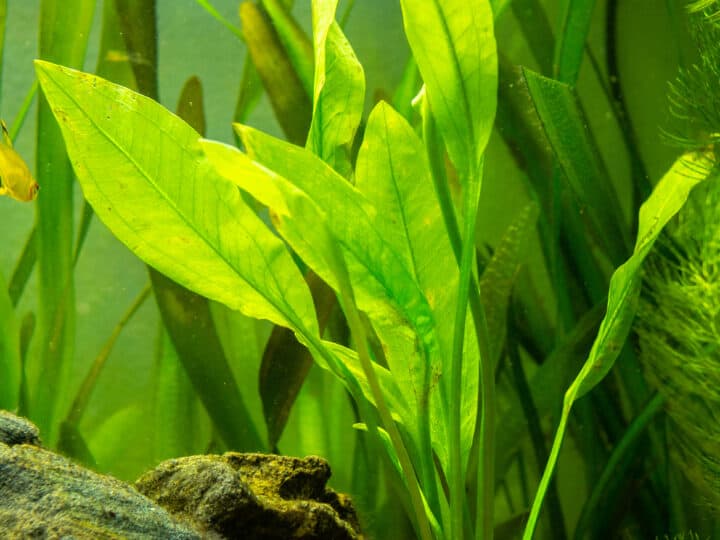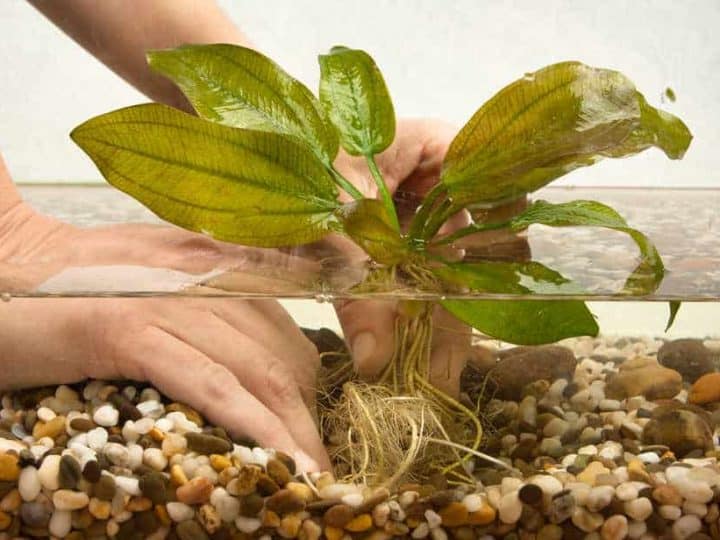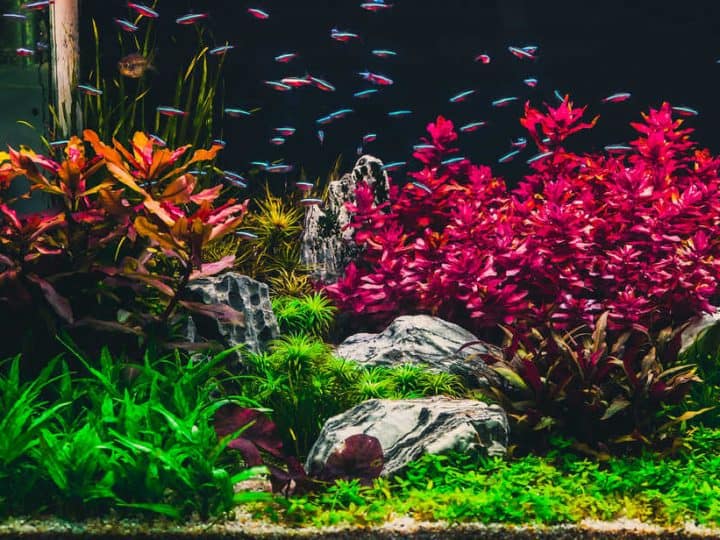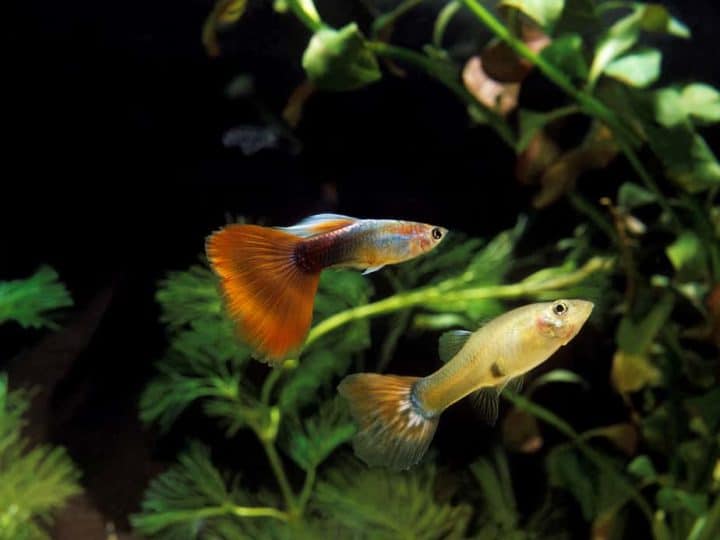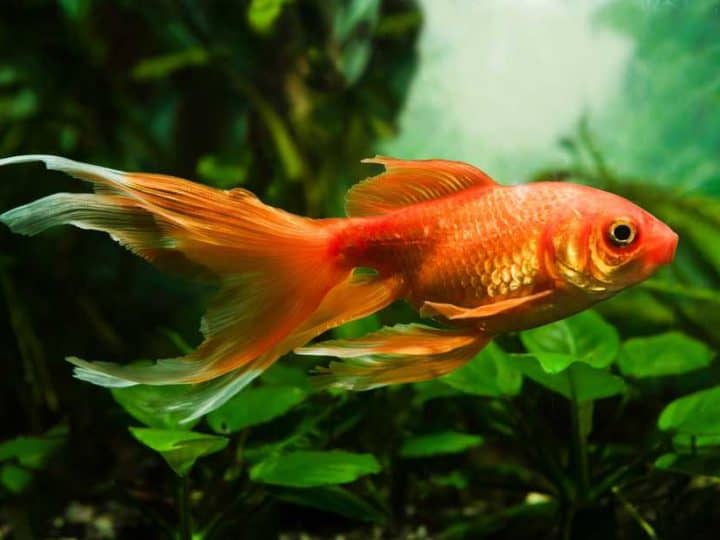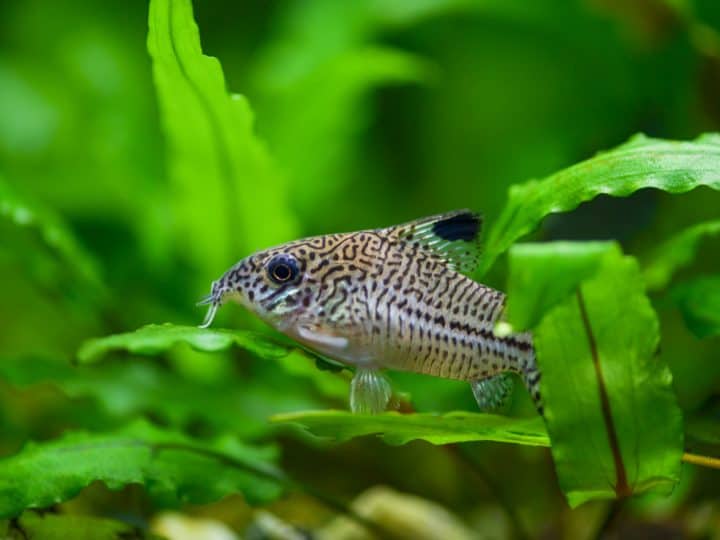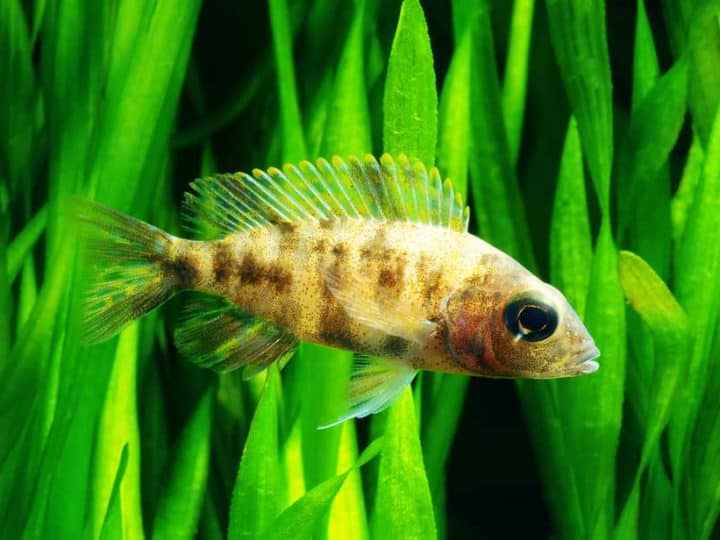When it comes to aquarium plant fertilizer, there are many options available. Two of the most popular options are root tabs and liquid fertilizer. For a long time it was a complete mystery to me which plants benefit from which type of fertilizer. Now that I finally understand this, I want to share it with you.
Plants that benefit from additional fertilizer in the substrate are categorized as heavy root feeders. These plants grow a strong root system to obtain nutrients. All plants, including root feeders, can get their nutrients from the water column.
Now you know the simple definition of what makes a plant a root feeder. You will need more information to know the ins and outs, so I’ll go over this in the next part of this page. I have also made a list of 7 plants that are heavy root feeders.
What makes an aquarium plant a root feeder
If you’re reading about root feeding plants for the first time, you’re in the right place. I’ll provide you with a great introduction so you’ll be able to know your way around the aquarium plant isle. In short, root feeders need either a nutrient-rich substrate like aquasoil, or you can supplement gravel/sand with root tabs.
These root tabs are small pills you bury in your substrate close to the roots of a plant. They are full of fertilizer and will feed your plants. A plant will take about 3 months to consume the root tabs, so you need to replace them every once in a while.
Like I already mentioned in the introduction, even root feeders are able to suck up nutrients straight from the aquarium water. It’s just that the portion of nutrients from the roots is way bigger with root feeders compared to water column feeders.
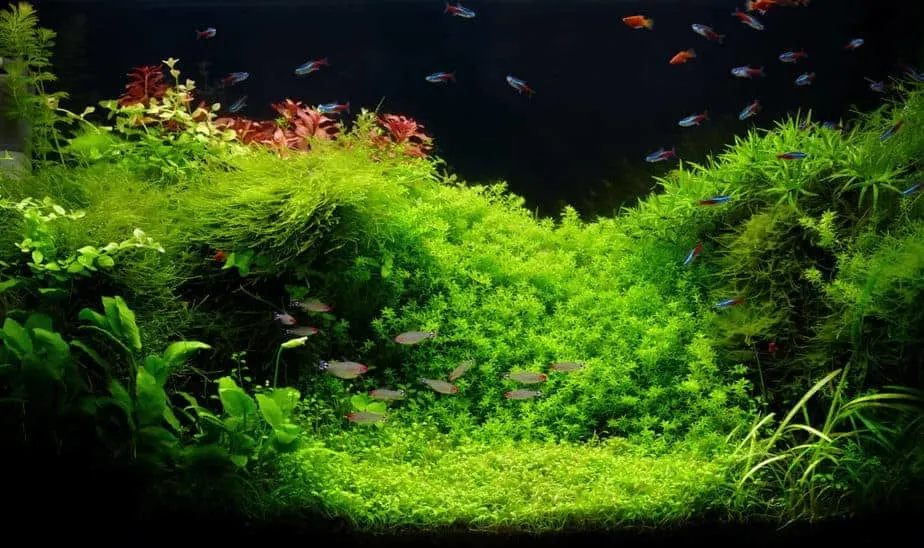
How to care for root feeding aquarium plants
Taking care of your root feeders requires a good substrate as a foundation for your plants. You can either invest in an aquarium soil, which contains a lot of nutrition. These soils are great if you’re planning on an aquarium that’s full of live plants. If you’re really going for a planted tank with potentially even a carpet of plants in the foreground, aquarium soil is the way to go.
The upsides of aquarium soil are that you don’t have to add additional root tabs and your entire substrate is fertile and ready for plants. You can either use just aquarium soil or put down a layer of aquarium soil followed by a cap-layer of regular substrate. I’d recommend the last option, because aquarium soil can make quite a mess.
That’s also the first downside to aquarium soil: it’s super messy. When you disturb the soil your entire aquarium will be super cloudy within seconds. Every time you’re going to be adding or moving a plant you’ll be reminded of this. When you go for another layer of fine gravel on top, the soil will be more “contained”.
Another downside is the price, aquarium soil is more expensive, especially in the long run. The nutrition that’s in the soil runs out in about 2 years (depending on how much plants you have and how fast they grow).You can always start adding root tabs when you see the effect of the aquarium soil decrease.
If you’re only looking to grow a couple of root feeders, buying some root tabs will be sufficient. Push the root tab down into the substrate with the plant’s roots and you’re good to go.
Now let’s go over some popular plants that can be classified as heavy root feeders.
1. Cryptocoryne
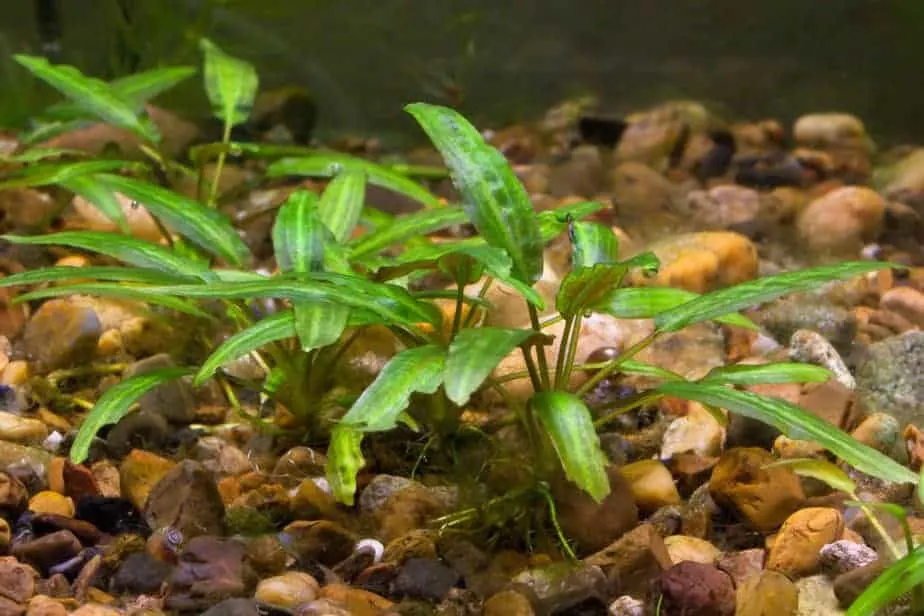
When thinking of a beginner plant that’s definitely a root feeding plant, Cryptocoryne comes to mind. There are many varieties of different Crypts, but they all grow an extensive root network.
Especially Cryptocoryne Wendtii and its subspecies are known to benefit from a nutritious substrate. I personally grow a beautiful Crypt in my 25 gallon (100 L) aquarium. It propagates by growing more leaves and I see baby plants coming up inches away from the main plant.
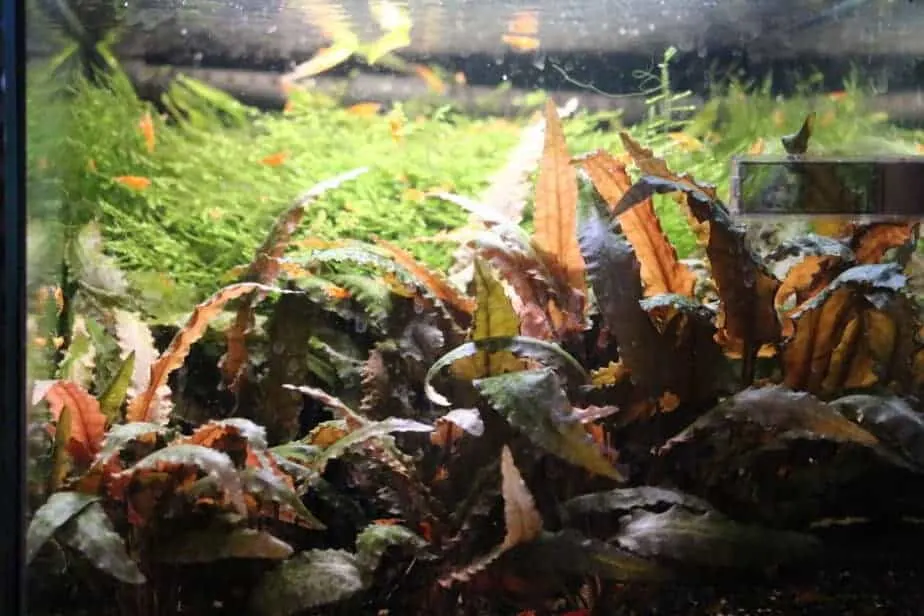
Every couple of months I take some root tabs and push them in the middle of the main plant. I do this because I did add some aquarium soil underneath my fine gravel but the effects wore out over a year ago. I’ve seen great results and I’m sure you will as well because Crypts have low demands and require just moderate lighting.
2. Amazon Swords
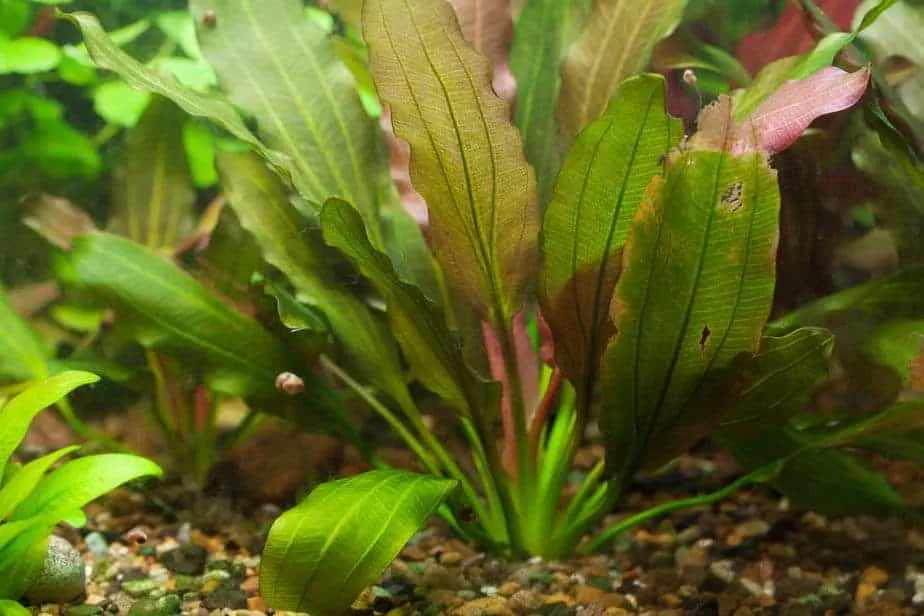
Just like Cryptocoryne I was thinking of adding Echinodorus as a complete genus on this list. To be honest, I think that would have been more fitting. Amazon Sword is the common name of a plant that’s formally known as “Echinodorus Grisebachii”.
I’ve once transplanted one of these beautiful plants and it’s unreal how many roots it has. It rightfully deserves the place on this list and is most definitely a heavy root feeding plant. Other Echinodorus plants are also root feeders. If you’re growing some, make sure to provide a nutritious substrate for the plants to thrive.
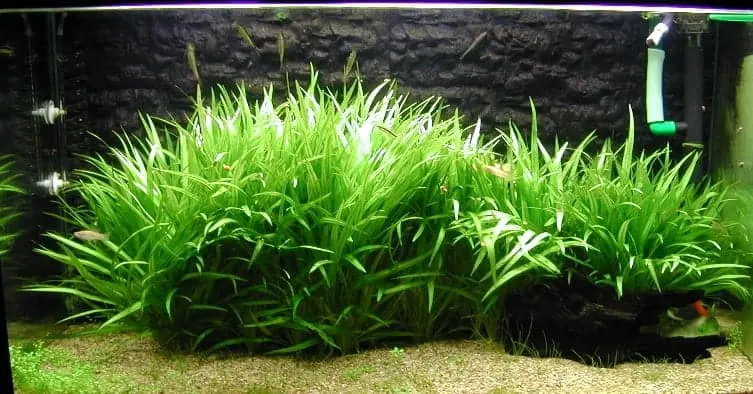
Some other relevant info about Echinodorus plants that you should know is that they are excellent beginner plants. They come in many different sizes, and they do well in moderate lighting. If you’re growing smaller varieties I recommend high to moderate lighting. These plants do well without additional CO2 injection, but they will do better with.
3. Vallisneria
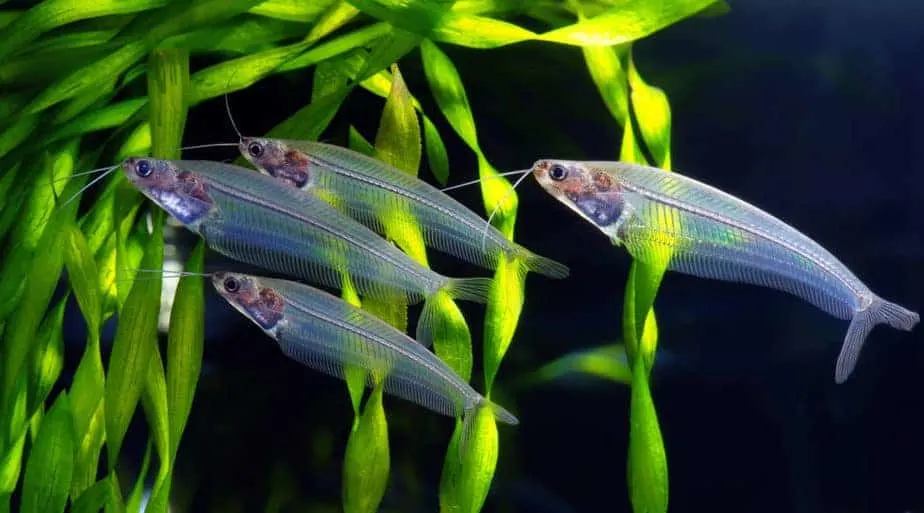
You’ve learned that root feeders vs water column feeders is not as black and white as many people think. When it comes to Vallisneria plants, I know from experience that they are great at sucking up nutrients straight from the water.
I’ve heard other experienced fish keepers say that you can grow most aquarium plants with just adding liquid fertilizer, and they’re right. But root feeding plants benefit so much from a nutritious substrate, and that’s also the case when it comes to vallisneria plants.
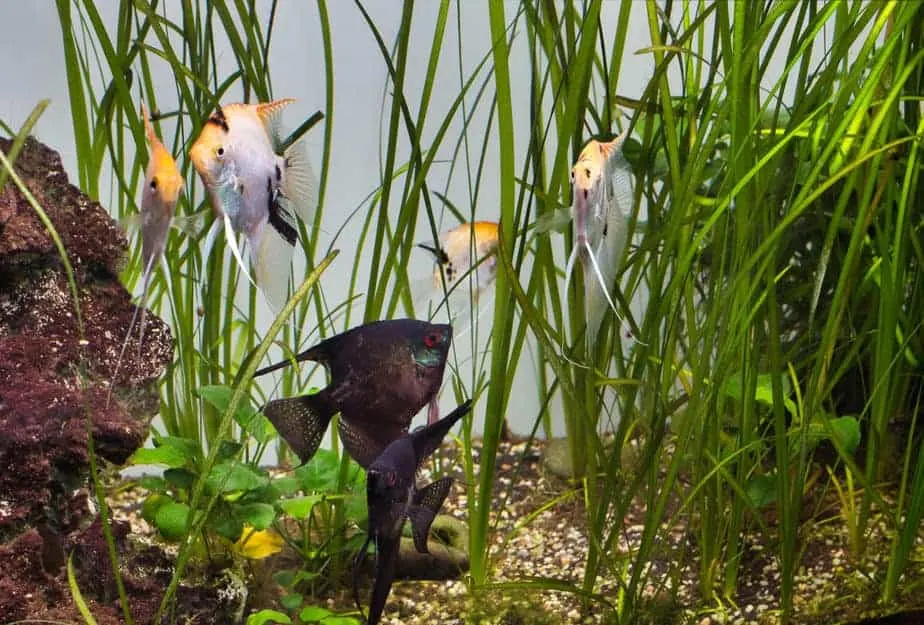
Vallisneria makes for an excellent background plant, and the long lush green halms are super pretty. The plant propagates by shooting out runners, and it’s an easy plant that’s perfectly suitable for beginners.
4. Blyxa Japonica
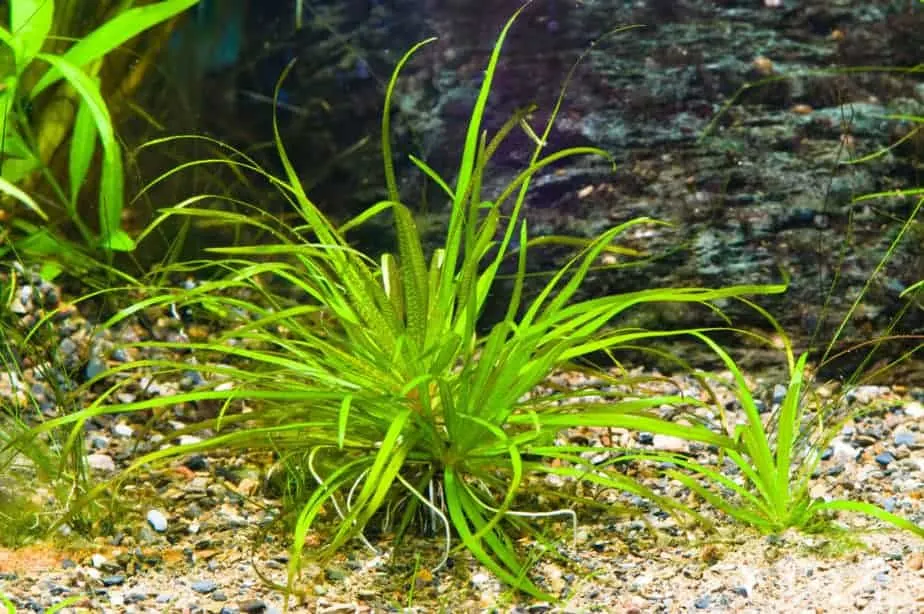
Blyxa Japonica, often just called Blyxa, is a pretty plant that stays small. It’s often used as a foreground plant, and it can even form a lovely carpet with the right patience. It’s a root feeding plant, and if you’re looking for a carpet effect I would definitely recommend aquarium soil.
The plant needs high light, which is something to take into account before purchasing it. I would also recommend adding CO2, but the plant can also live without. It will just grow a lot slower without additional CO2.
5. Dwarf Sagittaria
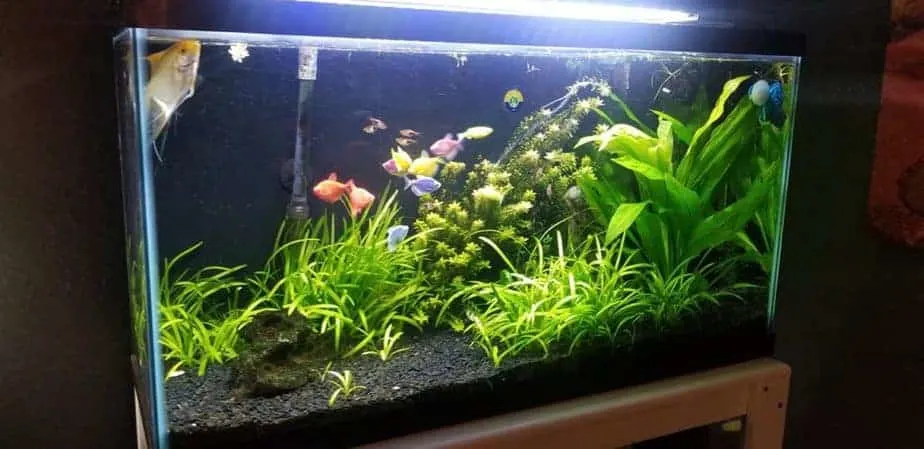
Prepare for three “dwarf” plants in a row! The first one is extremely popular and is called Dwarf Sagittaria. It’s often used as a foreground plant but it has the tendency to suddenly reach for the top of the tank and grow super long. It needs high light to stay small.
While liquid fertilizer will get you a long way with this plant, it can still be classified as a root feeder. For just a couple of dwarf sagittaria plants relying on root tabs is perfect, but for a carpet effect I again would point you towards soil.
Dwarf Sagittaria is a great beginner plant that’s easy to take care of. It’s undemanding and will tolerate a range of different water parameters. It can spread quickly and tolerates hard/alkaline water.
6. Red Tiger Lotus
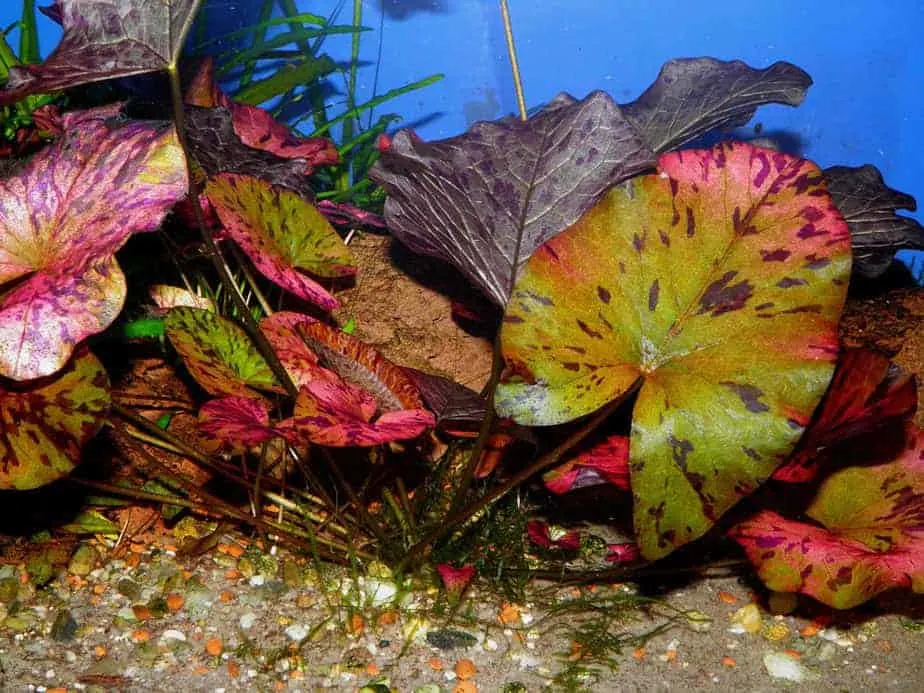
One of the most amazing aquarium plants is the Red Tiger Lotus, also often called Dwarf Tiger Lotus. It’s a lily plant that you buy as a small bulb. When planting, place the bulb on top of your substrate with just the roots buried. It will soon start to grow, and the roots are massive.
It’s often recommended to plant the bulb in its separate plastic container and bury the entire container, because the roots can take over your entire aquarium. With that many roots it’s no surprise this plant is also classified as a heavy root feeding plant.
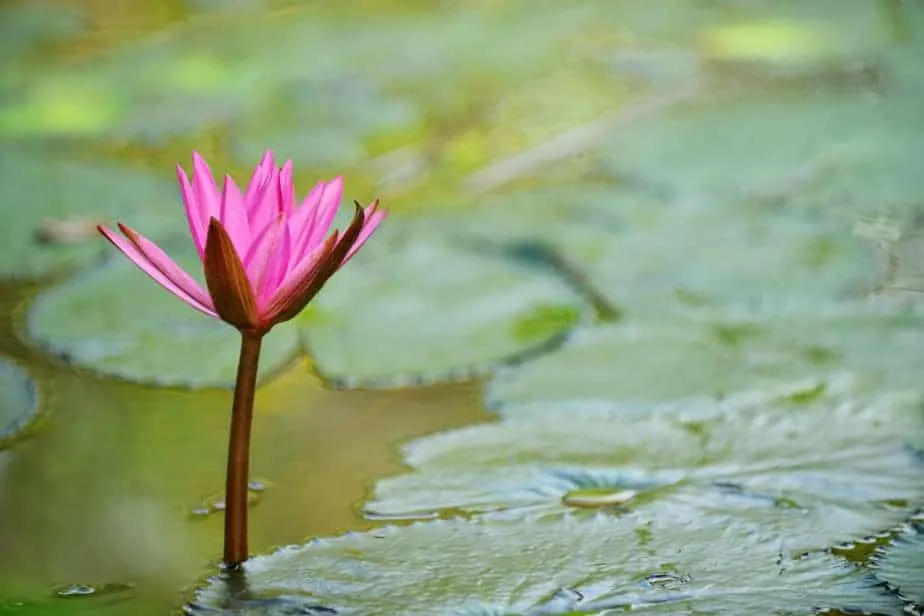
The plant is great, it produces pretty red leaves and shoots up runners to the water surface to grow pretty flowers. But I want to warn you, look into planting the bulb in a separate pot and cut off the flowers before they wilt. Once the flowers wilt they can drop a load of seeds that sand on your substrate throughout the tank.
I would still highly recommend this pretty plant.
7. Dwarf Hairgrass
A demanding but beautiful plant that makes some of the best carpets in the hobby is called Dwarf Hairgrass. For this plant to grow, you need some bright lights. The more light this plant gets, the less energy it will focus on vertical growth and the more it will try and spread horizontally.
It does not necessarily need CO2, but adding CO2 will make your life much easier. You should also trim this plant weekly to promote horizontal growth even more.
Next to all this basic information, this plant is a root feeder that does best with a rich aquarium soil. When growing this plant you could start adding root tabs, but due to the fine and short leaves you’re probably looking to cover a bigger part of your aquarium, which would require a lot of root tabs.
My favorite fishtank products that make life easier
I am so happy you enjoy this post so far! You will also definitely like my product recommendations that will make your fishkeeping experience so much better. I’m 100% sure you’ll love them!
- Without a gravel vacuum, like one from Aqueon, cleaning the substrate of your tanks is near impossible. Whenever I want to remove some of the sunken detritus from the bottom of my acrylic tanks I’m happy I’ve got one of these.
- It’s no secret that I do not like nutritious aqua-soil. It makes a mess and only works for a given amount of time. Instead, I always use a liquid aquarium plant fertilizer. Everyone who keeps live plants needs it, it’s not that expensive and makes your plants grow better.
- I love keeping plants, but planting and reorganizing my aquarium was difficult until I got a set of these tools. It’s much easier to plant any kind of plant compared to using my thick fingers.
- Ever since I’m able to accurately test my water parameters, including the pH level, keeping fish became less stressful. Before I was always stressed that my water parameters were wrong, but with a kit such as the API Master kit, I can measure this. It really is essential to successful fishkeeping.
- The more you know about your aquarium, the better! Temperature is crucial for the health of your fish. A thermometer will also show you whether your heaters are still working correctly. It will give you more insight and more peace of mind. It’s an easy way to ensure that you’re providing your fish with the tropical temperatures they need.

